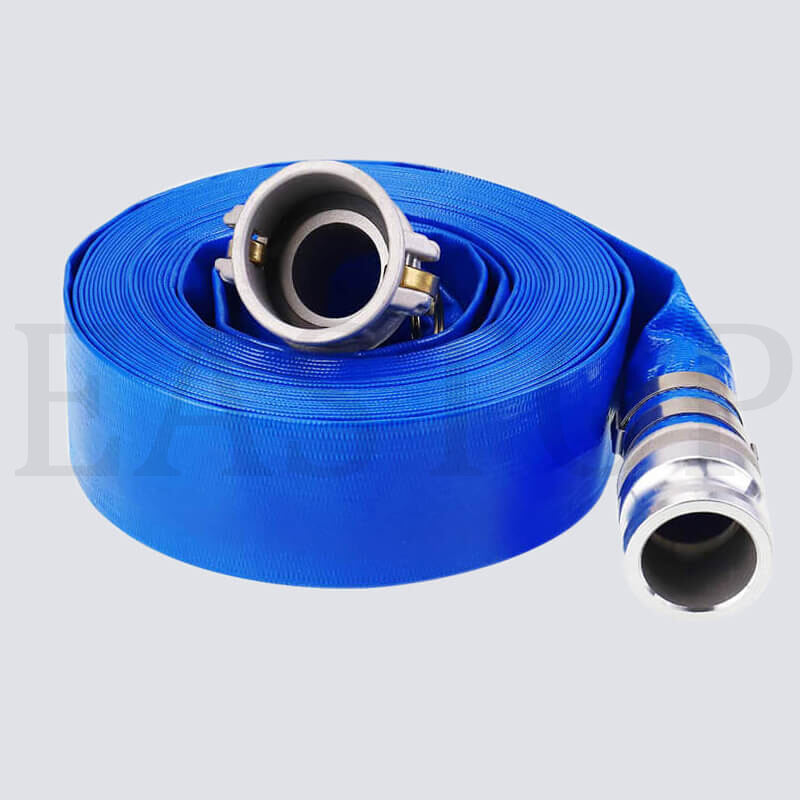PVC/PE-slanger fra Eastop anvendes i mange forskellige industrier til transport af væsker. Imellem disse kan slangerne imidlertid briste under drift, hvilket kræver indgreb og kan blive en sikkerhedsrisiko. At kende årsagerne til disse brud kan hjælpe med at undgå dem og opretholde stabil drift pVC Vævet Slange arbejdsgang.
Risici ved overbelastning af en PVC-slange
Overbelastning af PVC-slanger kan resultere i parasit, når maskinen kører. Hvis der udøves for meget kraft inde i slangen, kan den udvide sig og beskadige rørmaterialet. Dette kan medføre revner eller endda et brud, især hvis røret ikke er fremstillet til så højt et tryk. Det er ligesom at puste en ballon op for meget; til sidst sprænger ballonen! Vær opmærksom på det maksimale tryk, som din slange kan tåle, for at sikre sikkerheden under din drift.
Hvordan kan PVC miste styrke ved udsættelse for farlige stoffer?
Farlige kemikalier kan få PVC-materialer til at blive svækket. Visse stoffer kan reagere med PVC-materialet og få det til at nedbrydes og miste styrke og fleksibilitet. Du vil måske ikke se dette ske med det samme, men over tid kan det få slangen til at blive sprød og til sidst revne. Du bør vide, hvilken type kemikalier eller olier der løber gennem din Eastop PVC-slang, for at sikre, at den er kompatibel og ikke vil nedbrydes.
Hvorfor er det vigtigt med korrekt monterede og sikrede slanger?
Hvis en PVC-slang ikke er installeret eller fastgjort korrekt, kan det forårsage fejl i slangen under brug. En overstrammet slange kan blive strakt, og en løs slange kan svinge for meget, hvilket resulterer i slid og ubrugelighed. I begge tilfælde opstår unødigt spænd i slangen, og der kan opstå slangesvigt. Monter din pvc rør korrekt og ikke for stramt for at undgå disse problemer.
Effekten af tiden på PVC-slangetuber
Ligesom alt andet, der anvendes regelmæssigt, kan PVC-slangetuber slidtes og til sidst gå i stykker. De kan også blive stivere og lettere revne. Undersøgelse og vedligeholdelse er vigtigt for at forhindre skader på Eastop PVC-slangen. Forhindre et brud fra en defekt slange ved at udskifte din gamle slange, eller skift blot længden efter den aktuelle opgave.
Hvordan temperaturvariationer kan få PVC-slangetuber til at svigte?
Fejl i PVC-slanger kan også skyldes temperatursvingninger. Materialet kan udvide og trække sig sammen, når det bliver meget varmt eller koldt. Det kan desuden nogle gange ændre sig på en måde, der får PVC til at blive stift og næsten revne. Hvis du bruger din Eastop fleksibel pvc rørhose på steder med ekstreme temperaturer, skal du købe en slange, der kan klare temperaturen.

 EN
EN
 AR
AR
 BG
BG
 HR
HR
 CS
CS
 DA
DA
 NL
NL
 FR
FR
 DE
DE
 IT
IT
 PT
PT
 RO
RO
 RU
RU
 ES
ES
 TL
TL
 ID
ID
 VI
VI
 HU
HU
 TH
TH
 MS
MS
 BN
BN

